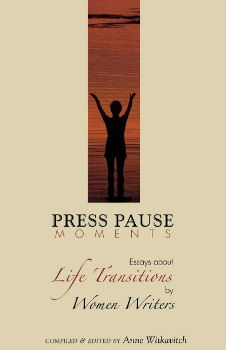
Adele Annesi is an award-winning editor and writer. She was a development editor for Scholastic, and is now a book editor specializing in business, culture and memoir. Her columns, reviews and stories appear in blogs, newspapers, magazines and literary journals, including 34th Parallel, The Fairfield Review, Hotmetalpress, Marco Polo Quarterly, Miranda Literary Magazine, The Pittsburgh Quarterly, Southern Literary Review and Tertulia. Her "After the Sunflowers" essay is part of Press Pause Moments: Essays About Life Transitions by Women Writers . Adele conducts workshops for libraries and other venues. She is currently working on a novel and a series of short stories. Visit her award-winning editing blog for writers, Word for Words , and her online workshop at Adele M. Annesi . |
The Story within the Story: Revising for the Real Thing |
|
One of the many maxims we learn in journalism is not just to report a story, but to get at what the story is really about. The difference between the two perspectives is the difference between a cloud and solid ground. The principle applies to all nonfiction (see The Art of Nonfiction: A Guide for Writers and Readers) and fiction, too. To finish a first draft, you’re basically looking to include organize and establish the main points of your story, the key facts. As you go through the process, a more well-defined image appears. Imagine an old darkroom where the photographer (the good ones, anyway) would immerse photographic paper into developing solution and watch the image appear. By looking closely, you not only see the main subject but details you hadn’t noticed before. That’s when you start getting at what a story is really about (see “Find Focus by Asking What the Story is Really About,” an article from the Poynter Institute). It’s also when questions arise that you must follow to their logical conclusions. Ask yourself, What does what I’ve discovered really say about this person or character, event or plot point? How will this affect the other characters in the story and the various plot points along the way? I recently had a conversation with a biographer (see How to Do Biography) as we discussed his subject. To accurately depict the person he’s writing about, he must decide which details to include and which to leave out, how to organize what he has, and how much of himself to inject into the piece. With the blurring of genre lines, this question is increasingly common. I told him he could decide based on how he answers these questions: • Does the fact reveal something
about the subject? When deciding whether to include information, you should answer yes to all three of these questions, not just one or two. The same principle applies to fiction. As you write and revise your work, ask yourself: •
What does what I’ve just written or the idea I’ve just had say about
this character? |
To edit, make sure you address all the impacts—to other characters, to the plot points, etc. Writers often fear these questions because the answers might lead them afield. But keep in mind, if you don’t answer the queries now, you’ll answer them later, and that can mean lots of time spent running headlong to a dead end. As you go through the vetting process, note the new reality that emerges. This is what your story is about. It may not be what you started with, but it should be richer—and more original—than where you began. For more information on the blurring of the line between genres, see “An Interview with Creative Nonfiction Writer Hank Stuever.” To pose an editing query, contact Adele Annesi. Click here to visit my online writing workshop.  |








